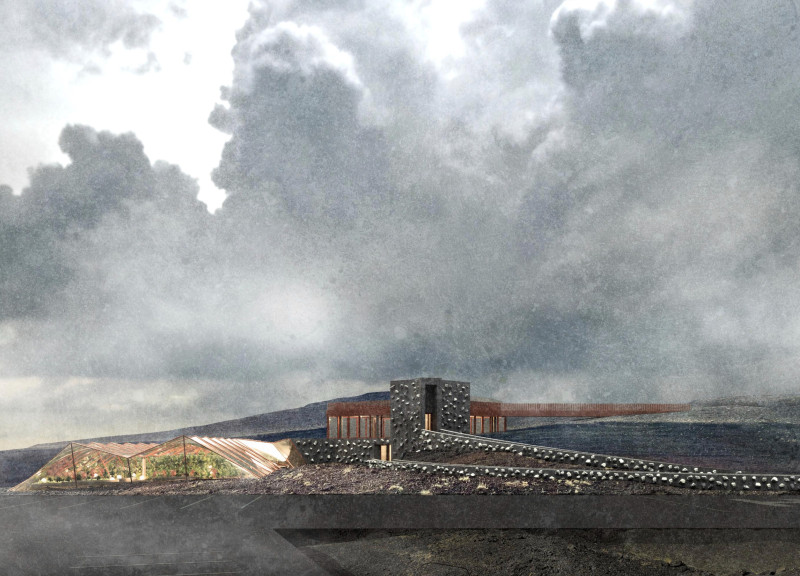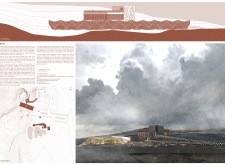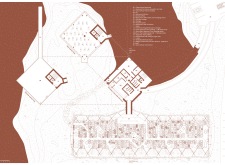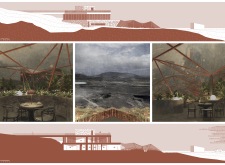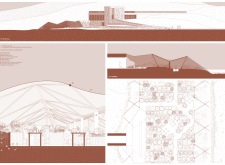5 key facts about this project
The primary function of the greenhouse restaurant is to provide an immersive dining experience that celebrates the local landscape and seasonal ingredients. The architectural design features extensive glass facades, allowing natural light to flood the interior while offering unobstructed views of the dramatic scenery. This design choice emphasizes transparency and openness, inviting the natural environment into the dining space and creating an inviting atmosphere. The careful orientation of the building is intended to optimize both exposure to sunlight and insights into the dynamically changing landscape throughout the day.
In terms of materiality, "Sprout" utilizes a thoughtful selection of resources that reinforce its commitment to sustainability. The robust structure is primarily built from reinforced concrete, ensuring durability and long-term resilience, while laminated timber adds warmth to the complex, creating a welcoming aesthetic. The glass components not only serve functional roles but also emphasize the relationship between the interior and exterior, blurring the lines between architecture and nature. Metal frameworks feature prominently in the greenhouse, supporting the weight of the roof while complementing the organic forms represented in the overall design. Additionally, the choice of natural stone for pathways and terraces brings an earthbound quality that connects the project to its geological context.
One of the unique aspects of the project is its focus on sustainability, embedded in both its design and operational practices. The inclusion of rainwater harvesting systems highlights an awareness of resource management, allowing the project to utilize water in ways that conserve this valuable commodity. Efforts to implement energy-efficient systems further enhance the building's performance, reducing reliance on mechanical solutions by promoting natural ventilation and thermal management. These sustainable measures provide a model of how architecture can coexist with environmental responsibility, setting a benchmark for future designs.
The engagement with the community is another vital element, as the multi-purpose hall serves not just as a functional space for events but also as a venue for fostering social interactions among visitors. This design aims to create a sense of place, where culinary culture can thrive alongside communal gatherings. By hosting various events, the project aligns itself with community-centric values, allowing it to function beyond the culinary experience alone.
The architectural approach taken in "Sprout" moves beyond strictly utilitarian intentions; it embodies an innovative exploration of form and function. The design manages to capture the essence of its surroundings while maintaining a contemporary aesthetic. With its organic forms and natural materials, the project evokes a sense of continuity between the built environment and the earth, aligning closely with the broader goals of sustainable architecture.
For those interested in a more in-depth understanding of "Sprout," including detailed insights into architectural plans, sections, and innovative design strategies, it is worth exploring the comprehensive project presentation. This exploration will provide a clearer perspective on how the architecture of "Sprout" encapsulates principles of ecological design while offering a space for enjoyment and community connection.


